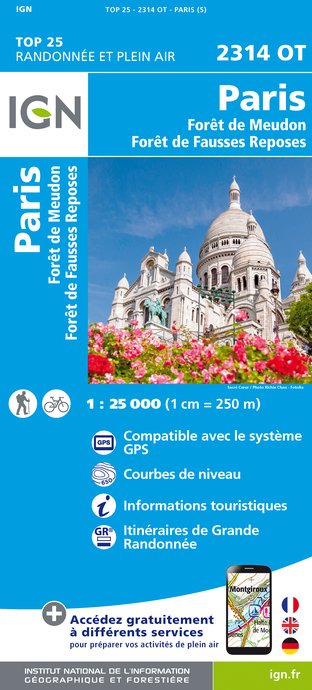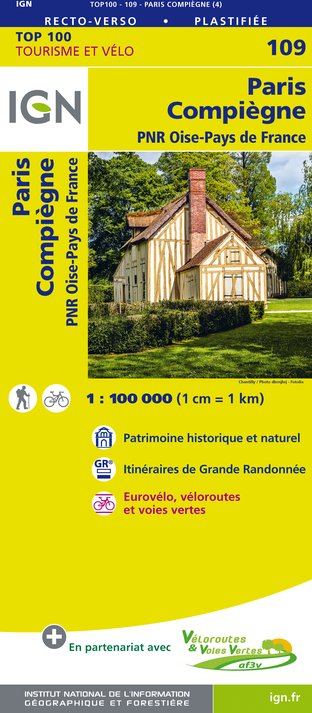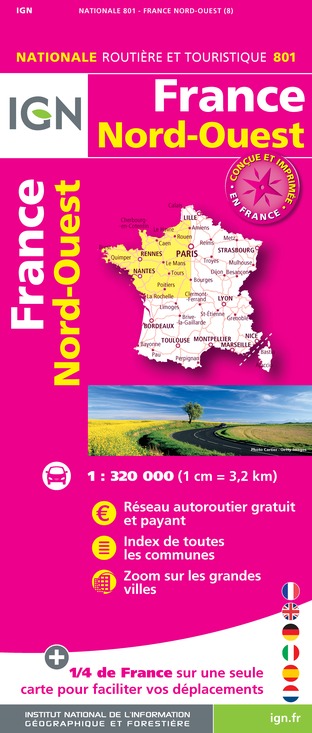Warnung
Warnungen
Art der Übung
Wandern
Fahrrad
Präsentation
Karte
Sehenswürdigkeiten
Cirkwi Kurzbeschreibung
Bewertungen und Rezensionen
In der Umgebung sehen
Die großen Kaufhäuser von Paris.

Kredit : Tuscan Knox
Die Cirkwi Kurzbeschreibung
Entdecken Sie den Pariser Luxus: Eine Einkaufsroute von Fabienne Lemoine
Paris ist nicht nur eine Stadt, sondern ein Erlebnis, besonders wenn es ums Einkaufen geht. Dank Balades Fluviales Fabienne Lemoine Fondateur sind wir eingeladen, auf eine Reise durch die exquisite Pracht der Pariser Kaufhäuser zu gehen. Diese historischen Einkaufsoasen, von den berühmten Galeries Lafayette bis zum luxuriösen Printemps, sind nicht nur Einzelhandelsgeschäfte; sie sind eine Eintauchen in eine Kultur, in der Mode, Schönheit und Kunst unter monumentalen Glasdecken verschmelzen. Diese Reiseroute verspricht eine Atmosphäre der Raffinesse und führt Sie durch das Herz von Paris, wo jedes Geschäft eine Geschichte von Innovation, Luxus und der sich ständig wandelnden französischen Gesellschaft erzählt.
Technischer Routenüberblick
Mit einer Strecke von etwa 5,5 km erreicht diese Reiseroute eine maximale Höhe von 37 Metern bei nur geringem Höhengewinn und zeichnet sich durch ein relativ flaches Gelände aus, das für Wanderer aller Könnerstufen geeignet ist. Die positive Höhenänderung ist bescheiden, von 27 auf 23 Meter, was einen einfachen Spaziergang durch die belebten Straßen von Paris bedeutet. Diese zugängliche Route betont den unglaublichen architektonischen und historischen Reichtum der großen Pariser Kaufhäuser und macht sie zu einer mühelosen, aber bereichernden Erfahrung.
Saisonale Tipps für Reisende
Unabhängig von der Jahreszeit bietet die großen Pariser Kaufhäusern ein einzigartiges Erlebnis. Winterbesucher können jedoch die magischen Weihnachtsschaufenster bewundern, eine wahre Tradition in der Stadt. Im Sommer bietet sich mehr Tageslicht zum Einkaufen, doch während der Verkaufszeiten im Januar und Juli können Sie hochwertige Schnäppchen ergattern. Tragen Sie immer eine Wasserflasche bei sich, tragen Sie bequeme Schuhe und denken Sie daran, dass im Frühling und Herbst ein Regenschirm erforderlich sein kann. Vor allem sollten Sie immer auf Taschendiebe achten, besonders in überfüllten Gegenden.
Paris: Ein Teppich aus Geschichte und Mode
Die Entstehung der Kaufhäuser im Paris des 19. Jahrhunderts markierte nicht nur eine Entwicklung im Einzelhandel, sondern auch einen bedeutenden kulturellen und sozialen Wandel. Diese imposanten Gebäude wie Le Bon Marché oder Printemps waren mehr als nur Geschäfte; sie waren Symbole für die bestenrebungen des aufstrebenden Bürgertums und die Früchte der industriellen Revolution. Paris, innerhalb der Region Île-de-France, steht als Zeugnis dieser Transformation und beherbergt diese ikonischen Institutionen, die Geschichte, Architektur und das Wesen des französischen Luxus und Stils vereinen.
Klimatische Einblicke für Besucher von Paris
Paris verfügt über ein mildes Klima das ganze Jahr über und ist somit ein ideales Reiseziel zu jeder Jahreszeit. Im Sommer ist es warm mit durchschnittlichen Höchsttemperaturen von 25°C, ideal, um das lebendige Straßenleben der Hauptstadt zu genießen. Die Winter sind kühl, mit Temperaturen, die selten unter 3°C fallen, und eignen sich somit hervorragend, um Indoor-Attraktionen wie die großen Kaufhäuser zu erkunden. Die besten Reisezeiten sind das Frühjahr (März bis Mai) und der Herbst (September bis November), wenn das Wetter am angenehmsten ist und die Stadt weniger überlaufen ist. Packen Sie entsprechend, da ganzjährig Regenschauer möglich sind.
Paris ist nicht nur eine Stadt, sondern ein Erlebnis, besonders wenn es ums Einkaufen geht. Dank Balades Fluviales Fabienne Lemoine Fondateur sind wir eingeladen, auf eine Reise durch die exquisite Pracht der Pariser Kaufhäuser zu gehen. Diese historischen Einkaufsoasen, von den berühmten Galeries Lafayette bis zum luxuriösen Printemps, sind nicht nur Einzelhandelsgeschäfte; sie sind eine Eintauchen in eine Kultur, in der Mode, Schönheit und Kunst unter monumentalen Glasdecken verschmelzen. Diese Reiseroute verspricht eine Atmosphäre der Raffinesse und führt Sie durch das Herz von Paris, wo jedes Geschäft eine Geschichte von Innovation, Luxus und der sich ständig wandelnden französischen Gesellschaft erzählt.
Technischer Routenüberblick
Mit einer Strecke von etwa 5,5 km erreicht diese Reiseroute eine maximale Höhe von 37 Metern bei nur geringem Höhengewinn und zeichnet sich durch ein relativ flaches Gelände aus, das für Wanderer aller Könnerstufen geeignet ist. Die positive Höhenänderung ist bescheiden, von 27 auf 23 Meter, was einen einfachen Spaziergang durch die belebten Straßen von Paris bedeutet. Diese zugängliche Route betont den unglaublichen architektonischen und historischen Reichtum der großen Pariser Kaufhäuser und macht sie zu einer mühelosen, aber bereichernden Erfahrung.
Saisonale Tipps für Reisende
Unabhängig von der Jahreszeit bietet die großen Pariser Kaufhäusern ein einzigartiges Erlebnis. Winterbesucher können jedoch die magischen Weihnachtsschaufenster bewundern, eine wahre Tradition in der Stadt. Im Sommer bietet sich mehr Tageslicht zum Einkaufen, doch während der Verkaufszeiten im Januar und Juli können Sie hochwertige Schnäppchen ergattern. Tragen Sie immer eine Wasserflasche bei sich, tragen Sie bequeme Schuhe und denken Sie daran, dass im Frühling und Herbst ein Regenschirm erforderlich sein kann. Vor allem sollten Sie immer auf Taschendiebe achten, besonders in überfüllten Gegenden.
Paris: Ein Teppich aus Geschichte und Mode
Die Entstehung der Kaufhäuser im Paris des 19. Jahrhunderts markierte nicht nur eine Entwicklung im Einzelhandel, sondern auch einen bedeutenden kulturellen und sozialen Wandel. Diese imposanten Gebäude wie Le Bon Marché oder Printemps waren mehr als nur Geschäfte; sie waren Symbole für die bestenrebungen des aufstrebenden Bürgertums und die Früchte der industriellen Revolution. Paris, innerhalb der Region Île-de-France, steht als Zeugnis dieser Transformation und beherbergt diese ikonischen Institutionen, die Geschichte, Architektur und das Wesen des französischen Luxus und Stils vereinen.
Klimatische Einblicke für Besucher von Paris
Paris verfügt über ein mildes Klima das ganze Jahr über und ist somit ein ideales Reiseziel zu jeder Jahreszeit. Im Sommer ist es warm mit durchschnittlichen Höchsttemperaturen von 25°C, ideal, um das lebendige Straßenleben der Hauptstadt zu genießen. Die Winter sind kühl, mit Temperaturen, die selten unter 3°C fallen, und eignen sich somit hervorragend, um Indoor-Attraktionen wie die großen Kaufhäuser zu erkunden. Die besten Reisezeiten sind das Frühjahr (März bis Mai) und der Herbst (September bis November), wenn das Wetter am angenehmsten ist und die Stadt weniger überlaufen ist. Packen Sie entsprechend, da ganzjährig Regenschauer möglich sind.
Automatisch generiert.
IGN Karten

2314OT - PARIS FORÊT DE MEUDON FORÊT DE FAUSSES REPOSES
Herausgeber : IGN
Sammlung : TOP 25 ET SÉRIE BLEUE
Leiter : 1:25 000
13.90€

119 PARIS SENS PNR DU GÂTINAIS FRANÇAIS
Herausgeber : IGN
Sammlung : TOP 100
Leiter : 1:100 000
8.40€

190 PARIS CHANTILLY FONTAINEBLEAU
Herausgeber : IGN
Sammlung : TOP 100
Leiter : 1:100 000
8.40€

118 PARIS CHARTRES PNR DE LA HAUTE VALLÉE DE CHEVREUSE
Herausgeber : IGN
Sammlung : TOP 100
Leiter : 1:100 000
8.40€

109 PARIS COMPIÈGNE PNR OISE-PAYS DE FRANCE
Herausgeber : IGN
Sammlung : TOP 100
Leiter : 1:100 000
8.40€

108 PARIS ROUEN BEAUVAIS PNR DU VEXIN FRANÇAIS
Herausgeber : IGN
Sammlung : TOP 100
Leiter : 1:100 000
8.40€

D75-95 ÎLE-DE-FRANCE OUEST
Herausgeber : IGN
Sammlung : CARTES DÉPARTEMENTALES IGN
Leiter : 1:150 000
5.90€

D28 EURE-ET-LOIR
Herausgeber : IGN
Sammlung : CARTES DÉPARTEMENTALES IGN
Leiter : 1:150 000
5.90€

D77 SEINE-ET-MARNE
Herausgeber : IGN
Sammlung : CARTES DÉPARTEMENTALES IGN
Leiter : 1:150 000
5.90€

NR01 HAUTS-DE-FRANCE
Herausgeber : IGN
Sammlung : CARTES RÉGIONALES IGN
Leiter : 1:250 000
6.80€

NR08 CENTRE-VAL DE LOIRE
Herausgeber : IGN
Sammlung : CARTES RÉGIONALES IGN
Leiter : 1:250 000
6.80€

NR03 ÍLE DE FRANCE
Herausgeber : IGN
Sammlung : CARTES RÉGIONALES IGN
Leiter : 1:250 000
6.80€

801 FRANCE NORD OUEST
Herausgeber : IGN
Sammlung : CARTES NATIONALES IGN
Leiter : 1:320 000
6.10€

EUROPE
Herausgeber : IGN
Sammlung : DÉCOUVERTE DES PAYS DU MONDE IGN
Leiter : 1:2 500 000
7.00€
Technische Informationen
Wandern
Schwierigkeit
Nicht angegeben
Entfernung
5.5 km
Art der Übung
Wandern
Fahrrad
Mehr anzeigen
Höhenprofil
Ausgangspunkt
75009
Paris
Lat : 48.8735Lng : 2.32901
Sehenswürdigkeiten
Datenautor
Bewertungen und Rezensionen
In der Umgebung sehen




